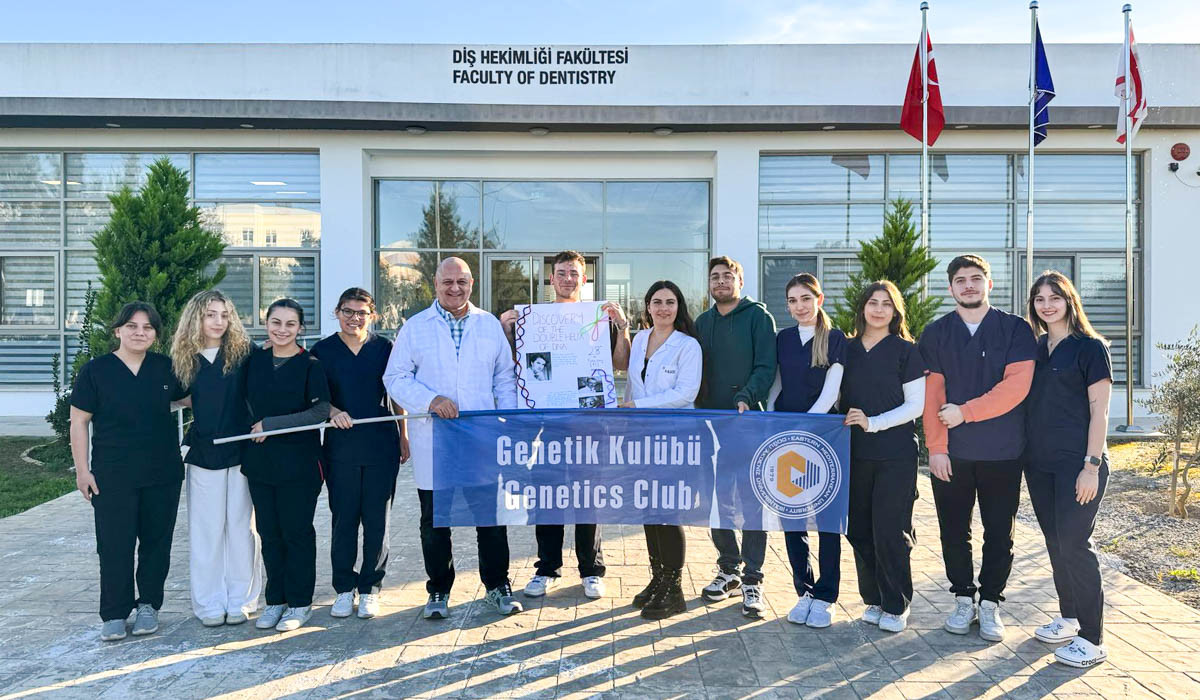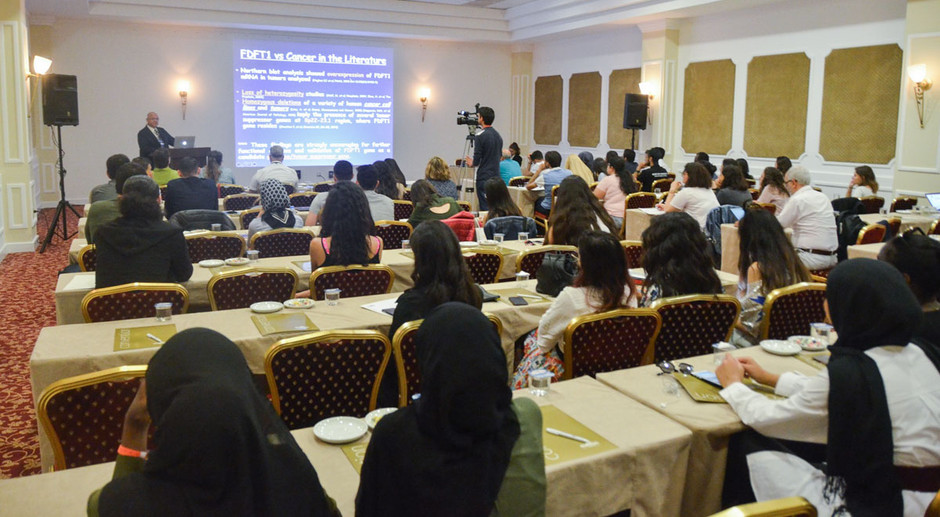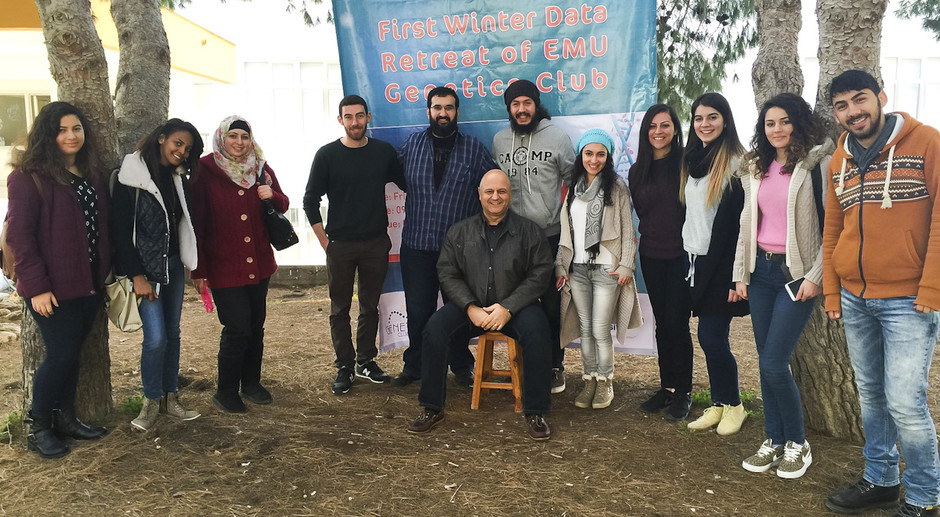Eastern Mediterranean University (EMU), Faculty of Dentistry’s Vice Dean and Genetics Club advisor Prof. Dr. Şükrü Tüzmen, EMU Faculty of Dentistry academic staff member Havva Kılgöz Eyüpoğlu and Genetics Club member students gathered together on Thursday, 29 February 2024 and set up a stand on the campus distributing statements with the aim of raising awareness. Information on the Double Helix structure of DNA and, Rare Diseases were provided during the said event. The statement distributed in the campus reads as follows:
“The Mystery and Structure of DNA Molecule”
“DNA (Deoxyribonucleic Acid) is one of the fundamental molecules of life, playing a critical role in determining the structure, functions, and inheritance of organisms. It is found in the nuclei of cells, on chromosomes. DNA is a long polymer chain formed by the combination of four different nucleotides: adenine (A), thymine (T), guanine (G), and cytosine (C). It can be thought of as an alphabet consisting of four letters. The primary function of DNA is to ensure the growth, development, regulation of functions, and inheritance of organisms. This molecule is responsible for storing the genetic information that guides protein synthesis. Genes are specific sequences found in certain regions of DNA, each coding for the production of a protein. Thus, DNA is the molecule that carries genetic information in all forms of life and is the fundamental molecule in our cells that provides instructions for protein production in humans.
The double helix structure of DNA was discovered on 28 February 1953, by scientists James Watson and Francis Crick, with contributions from Rosalind Franklin. This discovery is considered a revolutionary advancement in the fields of molecular biology and genetics. The work of Watson and Crick helped us understand how DNA serves as a carrier molecule and how it is replicated.
“What are Rare Diseases?”
A disease is defined as a ‘Rare Disease’ if it occurs in less than 1 in 2000 individuals in the community. Most rare diseases stem from genetic factors and are typically diagnosed during childhood. While some rare diseases have treatments when diagnosed early, in certain instances, chronic issues persist throughout life. As of today, approximately 300 million people worldwide have been diagnosed with rare diseases and are striving to continue their lives. The lengthy diagnostic process of rare diseases makes their identification more challenging, consequently reducing the chances of effective treatment for these individuals.
“Last Day of February is attributed as ‘Rare Disease Day’”
The Rare Disease Day is an international awareness observance held every year on the last day of February. This day aims to create awareness on rare diseases and their effects on patients experiencing such diseases. In 2008 EURORDIS (European Organisation for Rare Diseases) launched the first Rare Disease Day and since then, it has gained global recognition, with participation from numerous organizations, patient advocacy groups, healthcare professionals, researchers, and individuals affected by rare diseases. Held on the last day of February each year in approximately 100 different countries, its aims are to raise awareness, foster solidarity, and promote research.
Therefore, recognized as the last day of February each year, Rare Disease Day is a global initiative aimed at raising awareness and providing support for everyone battling rare medical conditions.”



